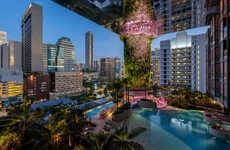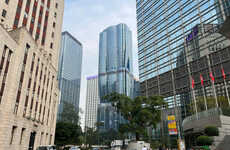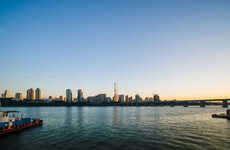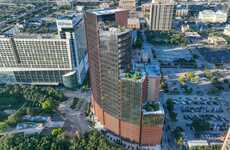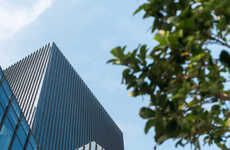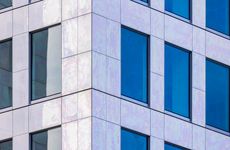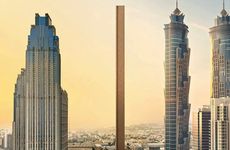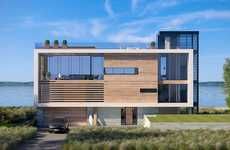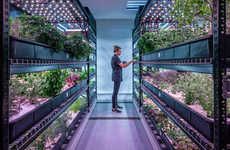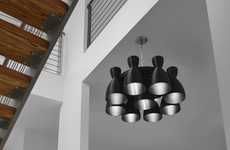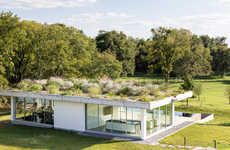
These Skyscrapers in Singapore by Büro Ole Scheeren Frame Public Spaces
Kalin Ned — March 6, 2018 — Art & Design
This pair of skyscrapers in Singapore are created by German firm Büro Ole Scheeren. While the structural aesthetic is interesting due to the fact that the tall buildings mimic a concave honeycomb pattern, their functionality is also purposeful. Situated in the Kampong Glam neighborhood the skyscrapers in Singapore are meant to serve as a connection between public spaces, instead of a force of architectural alienation.
Büro Ole Scheeren created the tallest tower yo be 186 meters and entirely residential, while the second is 170 meters and houses office spaces and rooms of a five star hotel. This duo of skyscrapers in Singapore gives way to a roof top garden, public observation decks, as well as a wonderfully intricate vegetative pathway system at the building's base.
Photo Credits: Iwan Baan
Büro Ole Scheeren created the tallest tower yo be 186 meters and entirely residential, while the second is 170 meters and houses office spaces and rooms of a five star hotel. This duo of skyscrapers in Singapore gives way to a roof top garden, public observation decks, as well as a wonderfully intricate vegetative pathway system at the building's base.
Photo Credits: Iwan Baan
Trend Themes
1. Concave Honeycomb Skyscrapers - The concave honeycomb pattern of these skyscrapers offers a unique and visually appealing architectural design opportunity.
2. Connection Between Public Spaces - Designing skyscrapers that serve as a connection between public spaces can create cohesive and functional urban environments.
3. Vegetative Pathway System - Integrating an intricate vegetative pathway system at the base of skyscrapers can promote sustainability and enhance the overall user experience.
Industry Implications
1. Architecture - Architects can explore the potential of concave honeycomb designs to create unique and visually stunning structures.
2. Real Estate - Real estate developers can leverage the concept of connecting public spaces through skyscrapers to enhance the value and desirability of their properties.
3. Urban Planning - Urban planners can incorporate vegetative pathway systems as a sustainable urban design solution to improve the overall livability of cities.
2.6
Score
Popularity
Activity
Freshness


